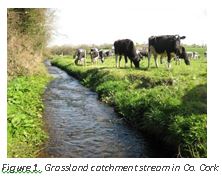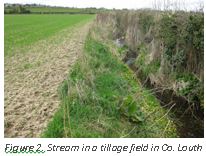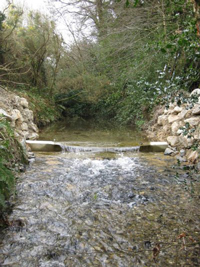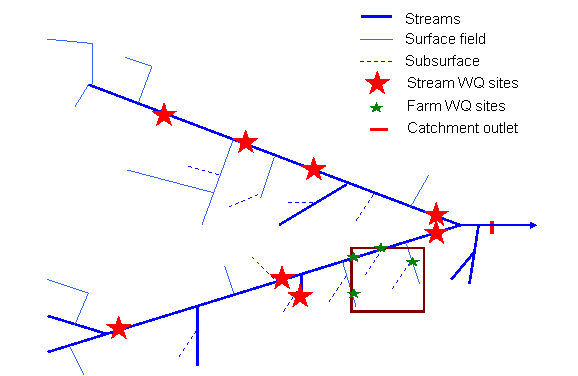
Nutrient Delivery to Streams
Dr Mairead Shore
Background
The Good Agricultural Practice measures are intended to help keep plant nutrients (N and P) on farms to maximise productivity and also contribute to the improvement of water quality in Irish waterways and water bodies. As part of the EU requirements under the Nitrates Directive, Ireland is required to monitor the effectiveness of these measures and especially nutrient transfers in rivers, lakes and estuaries. In terms of agricultural catchments, it is important to link the use of nutrients at the farm and field scale to those being delivered to catchments streams. This is especially important as the delivery to rivers is often due to source and pathway factors coinciding; management, hydroclimatics and local topography are all relevant. It may be, for example, that the majority of nutrient loads from catchments occur in very short timescales and that careful management is required at certain times. It may also be that non-agricultural sources have a role during ecologically important periods and that the catchment risk to rivers is different to those in standing water bodies such as lakes and estuaries.
Objectives
The primary objective of the ‘Nutrient DELIVERY to streams’ component of the Agricultural Catchments Programme is to identify the impact of agricultural land management on nutrient concentrations and loads in Irish streams. To meet this objective, the following research questions will be addressed;
- What are the loads and concentrations of nutrients at the catchment stream outlet?
- When are nutrient transfers occurring?
- How do seasonal farm management activities influence nutrient fluxes?
- Are N & P flux patterns at the outlet concurrent with patterns within the upstream surface and subsurface pathways?
The role of farm ditches and in-stream processes in removing or adding nutrients in catchment streams will also be investigated by a Walsh Fellow (PhD studentship).
Methods


State-of-the art technology will be used to continuously monitor P (total P, total soluble P, total reactive P and soluble reactive P), N (total N, nitrate), turbidity, electrical conductivity and temperature at the outlets of each catchment.
Flow and nutrients are being monitored at each catchment outlet using flow gauging stations (Fig 3) that are instrumented with continuously logged water level meters, flow velocity meters, automatic water samplers and on-site bankside nutrient analysers. The on-site analysis allows for samples to be analysed as soon as the sample is collected, which is important for nutrient forms such as soluble reactive P which can be transformed into less bio-available forms when stored for long periods.
In addition to the outlet monitoring, ‘snapshot’ water quality surveys will be conducted in each catchment every few weeks to help understand the link between land management activities, seasonal conditions, soil type variation and water quality (Fig 4).

Figure 4. Stream water quality (WQ) will be measured at catchment outlets, and also during catchment and farm snapshot sampling surveys.
Farmers in each catchment will also be encouraged to have ‘farm snapshots’ of water quality conducted. These once-off assessments will identify the sources and sinks of water and nutrients on the farm, and water quality will be tested as it enters and leaves the property. These farm snapshots provide useful information for farmers at the farm scale for where management can be changed to improve water quality, in the same way that soil testing helps to fine-tune crop and grassland nutrient management.

Figure 3. Water quantity and quality is being measured at 2nd-3rd order stream outlets of agricultural catchments. Low profile flat-V weir, Co. Wexford. |
Outcomes
The monitoring will identify how effective the Good Agricultural Practice measures are at maintaining or improving water quality in streams. The research will also help identify the relative influence of point sources (such as sewage treatment works discharge, stormwater from built environments and farm yards) compared with ‘diffuse’ sources such as drainage and runoff from land. An important outcome of the stream monitoring component of the Programme will be greater confidence in the link between farm management and water quality so that improvements to management, where required, can be made with the confidence that the changes will have a positive impact at the catchment scale.
